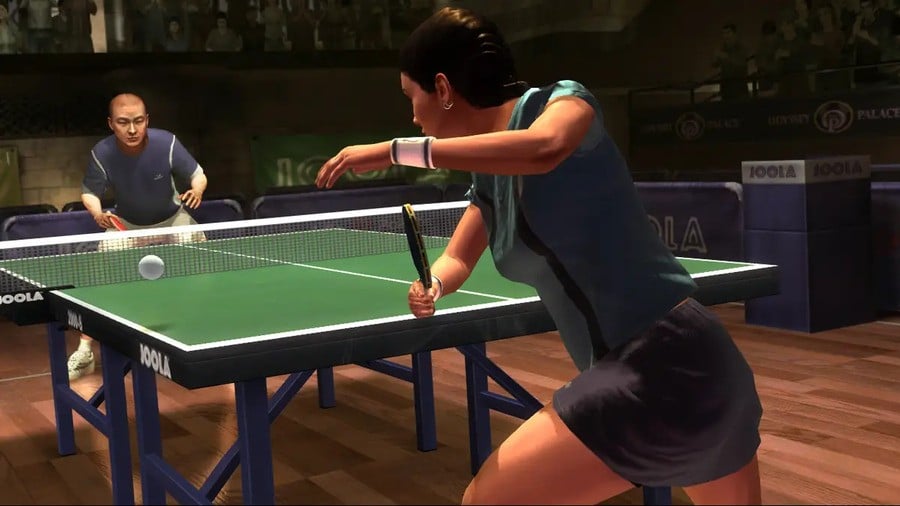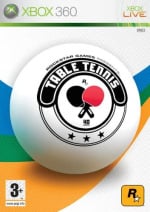
In early 2006, Rockstar Games took everyone by surprise by releasing Rockstar Games: Presents Table Tennis, an in-depth simulation of the classic paddle-based sport.
It was a huge departure for the hugely successful publisher, which had up to then mostly made a name for itself through releasing violent and gritty action games like Grand Theft Auto III, Manhunt, and the console ports of Max Payne. Many were — and still are — baffled at the decision, with the Rockstar co-founder Sam Houser telling IGN at the time that the project came about because "we absolutely love table tennis and wanted to try and make something that could show the audience what could be possible [...] in the next generation of videogames."
However, speaking to one of Rockstar's other co-founders, Jamie King, in 2021, he revealed a slightly more sweary account of how the table tennis game emerged, claiming that it grew out of a Rockstar San Diego tech demo for the Rockstar Advanced Game Engine (or "RAGE" as it is now known). This is the proprietary game engine that was later used for releases such as Grand Theft Auto IV, Grand Theft Auto V, Red Dead Redemption, and Red Dead Redemption 2.
As King (who left the company back in 2006) told us back then, the origins of RAGE and Table Tennis go back to Electronic Arts's decision to buy Criterion, the popular middleware developer, which gave EA control of the widely-used game engine Renderware. Though the new owners promised to honour any existing contracts with third parties at the time, panic shot through the top level of the industry, with Rockstar's executives being among those worried about the implications.
Rockstar had used Renderware on Grand Theft Auto III, Grand Theft Auto Vice City, and Grand Theft Auto San Andreas, but was reluctant to pay one of its biggest rivals to continue licensing the technology.
King told us, "I was in Rockstar Vienna working on the ports for Max Payne for consoles and I got off the plane and Sam’s like, ‘Fucking EA’s just bought Renderware, we need to make our own engine, sort it out!” So I’m like ‘Cool, okay!’ And so, one of the reasons that we loved Rockstar San Diego was they had an amazing exporter and we loved Midtown Madness. So, we brought people from Rockstar Vienna and Rockstar North to San Diego and we created RAGE. So I helped build that initial team and the beginnings of the next-gen engine that Rockstar still use today. And then we got to go to Japan and play with the PlayStation 3 before anyone else when it was just a big silver box with a red button."
It was while building RAGE that a team at San Diego put together the Table Tennis demo that would eventually grow to become Rockstar Games Presents: Table Tennis. As for why the developers chose Xbox 360 as the platform of choice and not PS3, it was all about creating something that was both quick to develop and nice and contained. Though that didn't stop Rockstar from teasing a PS3 port that never happened during a 2005 video featuring Sam Houser (note the Orange Ping Pong ball on the table).
"Rockstar Games Presents Table Tennis […] was really a game for us to show off or prove our game engine from a physics perspective," King told us. "It was a nice and small and realistic thing to make in time, right? Because the PlayStation 3 was that whole cell-processor architecture where if you were an Xbox developer and you hadn’t sat down with Sony and seen the bus and the SPUs and whatever, you had to be so disciplined about how you broke down your code and sent the instructions off to come back and recompile. On an Xbox, you had three PowerPC chips and they could all see each other, you could be very sloppy with your code."
When it was released in 2006, Rockstar Games Presents: Table Tennis received a positive reception from video game outlets like Eurogamer, Gamespot, and Game Informer. A version for the Nintendo Wii launched the following year to a slightly less enthusiastic response, and then Rockstar's flirtation with sports seemingly came to an abrupt end.
Part of Table Tennis's DNA, however, has lived on, with the tech-demo-turned-game introducing the world to RAGE — a game engine the company still uses to this day.







